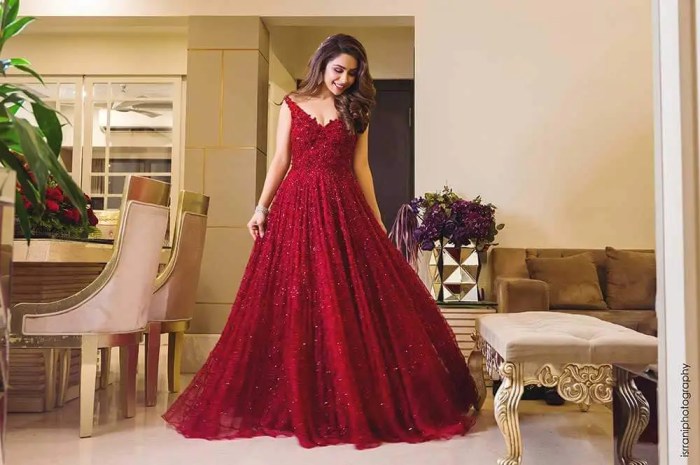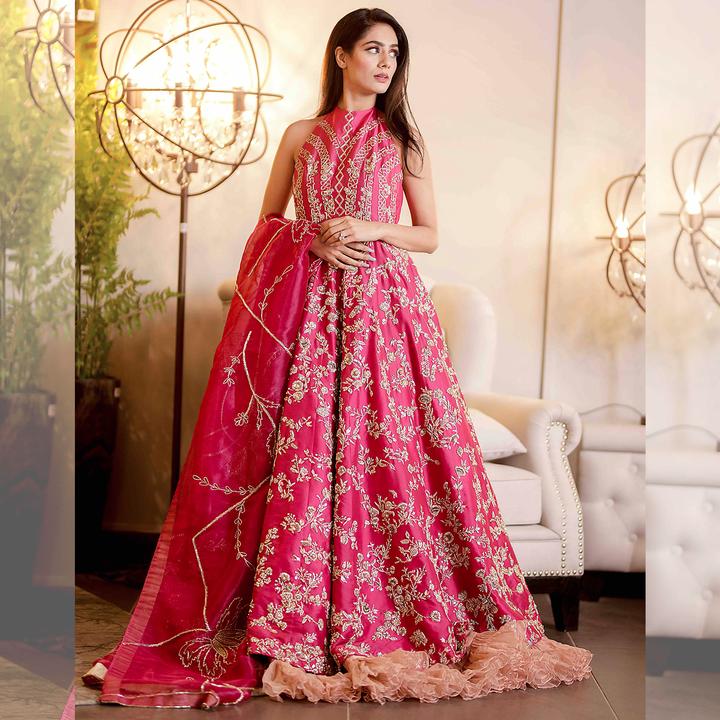Wedding Reception Dress Styles: A Guide
Wedding dresses for reception – Choosing the perfect wedding reception dress is a crucial part of wedding planning. It’s an opportunity to express your personal style while ensuring comfort and elegance for your special day. This guide explores various aspects of reception dress selection, from styles and fabrics to accessories and budget considerations, offering a comprehensive overview to help you make informed decisions.
Reception Dress Styles: Silhouette, Fabric, and Aesthetic
Several distinct styles cater to diverse preferences and body types. Each offers a unique silhouette, fabric choice, and overall aesthetic.
- A-Line: This classic style features a fitted bodice that gradually flares out from the waist, creating an A-shape. It’s universally flattering, suitable for various body types, and works well with a range of fabrics like chiffon, silk, or lace. The aesthetic can range from romantic and flowing to sleek and modern, depending on the fabric and details.
- Mermaid: The mermaid silhouette hugs the body closely from the shoulders to the knees, then flares out dramatically, creating a dramatic, figure-hugging look. This style is best suited for those with a defined waist and confident about showing off their curves. Fabrics like satin, crepe, or lace are commonly used. The aesthetic is typically glamorous and sophisticated.
- Ballgown: This style features a fitted bodice and a full, voluminous skirt, often made with layers of tulle or organza. It creates a fairytale-like aesthetic, ideal for brides who want a dramatic and romantic look. It’s best suited for brides who are comfortable with a more dramatic silhouette. This style can be less practical for smaller venues or those with limited movement space.
- Sheath: A sheath dress offers a streamlined, column-like silhouette, hugging the body closely from top to bottom. This style is simple yet elegant, suitable for brides who prefer a more minimalist aesthetic. It’s often made with fabrics like crepe, jersey, or silk. It’s flattering on various body types, particularly those with a slender build.
- Empire Waist: This style features a high waistline that sits just below the bust, creating a flowing silhouette that skims over the body. It’s incredibly flattering for most body types, especially those who want to emphasize their upper body. Light and flowing fabrics like chiffon or georgette are commonly used. The aesthetic is typically romantic and ethereal.
Comparison of A-Line, Mermaid, and Ballgown Styles

Source: shaadiwish.com
The suitability of A-line, mermaid, and ballgown styles depends on both body type and venue.
| Style | Body Type | Venue Suitability |
|---|---|---|
| A-Line | Most body types | Versatile; suitable for various venues |
| Mermaid | Hourglass, athletic | More suitable for formal, spacious venues |
| Ballgown | Most body types (can overwhelm petite frames) | Best in large, formal venues; less practical in smaller spaces |
Reception Dress Necklines: Suitability for Bust Sizes and Styles
| Neckline | Bust Size | Personal Style |
|---|---|---|
| Sweetheart | All bust sizes (particularly flattering on smaller busts) | Romantic, classic |
| V-Neck | All bust sizes (elongates the neck and torso) | Modern, sophisticated |
| Halter | All bust sizes (can be less flattering on larger busts without proper support) | Modern, sleek |
Fabric Choices and Their Properties
The fabric you choose significantly impacts the dress’s drape, comfort, and overall aesthetic. Each fabric offers unique advantages and disadvantages.
- Silk: Luxurious, drapes beautifully, breathable but delicate and expensive. Requires professional dry cleaning.
- Lace: Adds intricate detail, can be delicate and requires careful handling. Dry cleaning is usually recommended.
- Chiffon: Lightweight, airy, and flows beautifully, but can be sheer and wrinkle easily. Hand wash or dry clean.
- Tulle: Stiff, creates volume, but can be itchy and difficult to work with. Dry cleaning recommended.
Fabric care varies significantly. Silk and lace often require professional dry cleaning, while chiffon and tulle might be hand-washable or dry-cleanable depending on the blend.
Less Common Reception Dress Fabrics
- Organza: Sheer, crisp, and creates beautiful volume. Ideal for ballgown styles.
- Brocade: Rich, textured fabric with intricate woven patterns. Adds a touch of opulence.
- Velvet: Luxurious, soft, and adds a touch of drama. Suitable for winter weddings.
- Mikado: Crisp, structured silk with a subtle sheen. Creates a sleek and modern silhouette.
- Crepe: Lightweight, matte fabric with a slightly textured surface. Drapes well and is comfortable to wear.
Accessorizing the Reception Dress
Accessories can elevate a simple reception dress, adding personality and enhancing its elegance.
- Delicate necklace
- Elegant earrings
- Statement belt
- Bridal heels
- Clutch purse
Jewelry style significantly impacts the overall look. Statement necklaces draw attention upwards, while delicate earrings complement a simpler neckline.
Accessory Combinations for Different Dress Styles
- Bohemian: Long, flowing earrings; embellished sandals; woven crossbody bag.
- Classic: Pearl necklace; classic pumps; satin clutch.
- Modern: Geometric earrings; minimalist heels; structured top-handle bag.
Reception Dress Length and Hemlines
Dress length and hemline choices depend heavily on venue type and the season.
- Floor-length: Formal, suitable for most venues, especially in cooler months.
- Midi: Versatile, works well in various settings, suitable for warmer weather.
- Tea-length: Elegant, suitable for less formal settings or garden weddings.
Creative hemlines, like high-low or asymmetrical styles, add visual interest and can flatter different body types.
Factors to Consider When Choosing a Hemline
- Venue type (formal vs. informal)
- Season (weather considerations)
- Personal preference and comfort
Color and Design Considerations, Wedding dresses for reception
Color palettes and design details contribute significantly to the overall look and feel of the reception dress.
Color Palettes for Wedding Reception Dresses
- Spring/Summer: Pastel shades like blush pink, lavender, or mint green.
- Autumn: Rich jewel tones like burgundy, emerald green, or sapphire blue.
- Winter: Classic ivory, champagne, or silver.
Design Details and Their Impact
Intricate beading, embroidery, or embellishments increase the formality and cost of the dress. These details can add a touch of glamour or a unique personalized touch.
Sleeve Styles and Their Effects

Source: shopify.com
Sleeveless styles are suitable for warmer weather and create a more modern aesthetic. Short sleeves offer a touch of elegance, while long sleeves add sophistication, warmth, and are appropriate for cooler months or more formal occasions. The sleeve style significantly affects the overall feel of the dress, ranging from airy and light to formal and sophisticated.
Budget and Shopping Strategies
Finding a reception dress within budget requires planning and strategic shopping.
Strategies for Finding a Reception Dress Within Budget
- Set a realistic budget before you start shopping.
- Shop during off-season sales or consider sample sales.
- Prioritize what’s important (fabric, style, details) to make informed choices.
Ready-to-Wear vs. Custom-Made
Ready-to-wear dresses offer convenience and affordability, while custom-made dresses allow for personalized design and perfect fit, but at a higher cost.
Planning a Reception Dress Shopping Trip
- Schedule appointments in advance.
- Bring supportive undergarments.
- Consider bringing a trusted friend or family member for advice.
- Be open to trying on different styles.
- Don’t rush the decision; take your time to find the perfect dress.
Clarifying Questions: Wedding Dresses For Reception
Can I wear the same dress for the ceremony and reception?
Choosing the perfect wedding dress for your reception is key! You want something comfortable and stylish, reflecting your personality. For a more relaxed and fun vibe, consider a shorter dress or even a chic jumpsuit; some brides even rock a gorgeous gown paired with sneakers, check out these amazing styles wedding dress with sneakers for inspiration.
Ultimately, your reception dress should allow you to dance the night away in comfort and style.
While possible, many brides opt for a change of attire, allowing for greater comfort and a distinct shift in style between the ceremony and reception. A more relaxed reception dress allows for greater freedom and movement during dancing and celebrations.
How far in advance should I start shopping for my reception dress?
Ideally, begin your search 6-9 months before the wedding to allow ample time for alterations, fittings, and potential delays. This ensures a stress-free process and allows for careful consideration of all options.
What if my reception dress gets damaged before the wedding?
Have your dress professionally cleaned and preserved as soon as possible. Depending on the extent of the damage, alterations may be necessary. Consider purchasing wedding insurance for unforeseen circumstances.
What are some eco-friendly options for reception dresses?
Consider renting a dress, opting for sustainable fabrics like organic cotton or recycled materials, or purchasing a pre-owned gown. Supporting ethical and sustainable brands is also a significant step towards eco-conscious bridal fashion.
